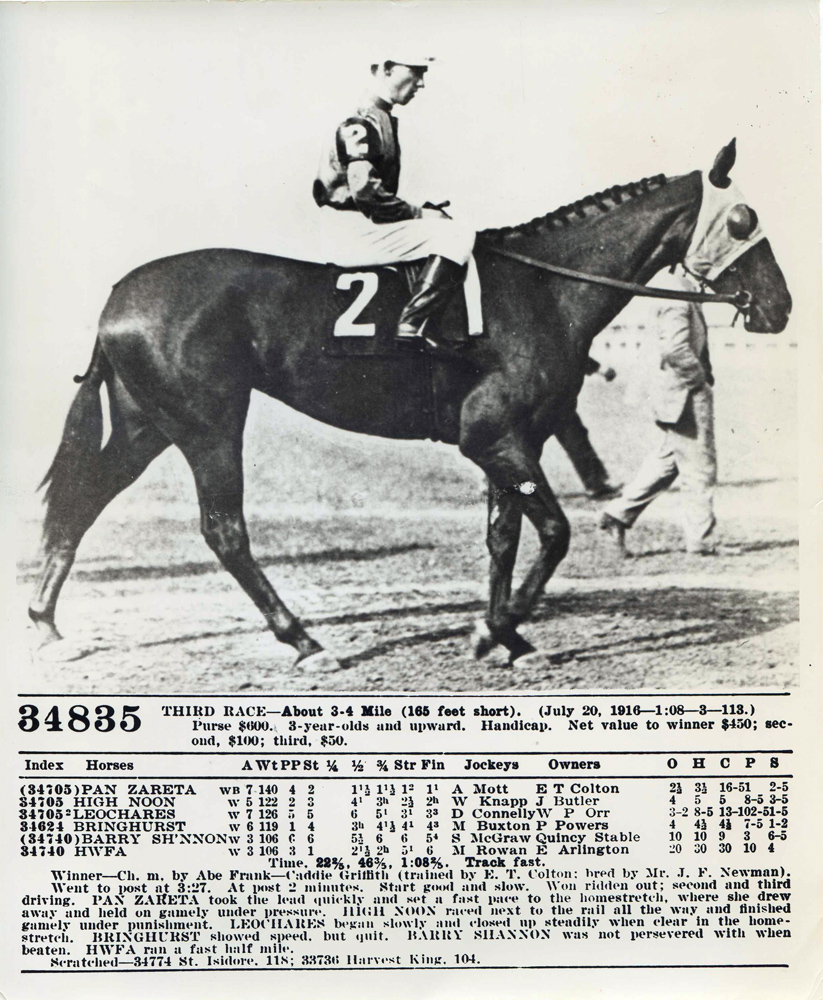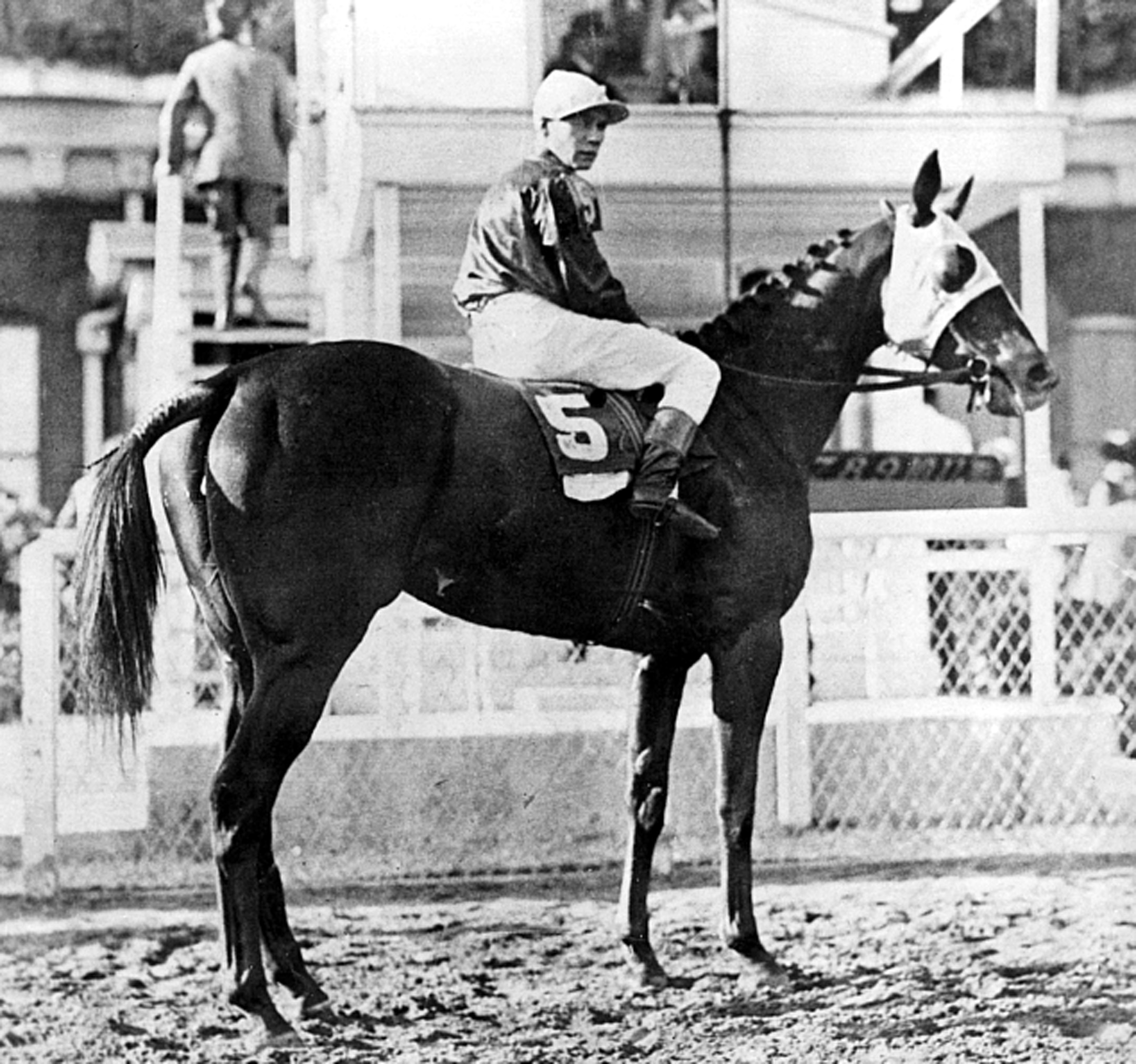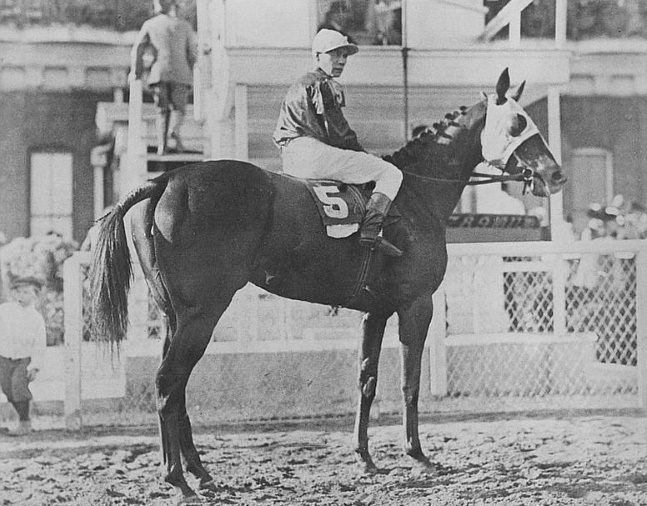Pan Zareta (TX)
One of the most durable and consistent racehorses in the sport’s history, Pan Zareta won 76 races, more than any filly or mare in history. Her remarkable exploits included carrying 130 pounds or more 28 times and setting or equaling 11 track records.
Racing Record
151
Starts
| 1912 | 19 | 13 | 3 | 2 | $3512 $3,512 |
| 1913 | 33 | 15 | 8 | 3 | $8895 $8,895 |
| 1914 | 28 | 13 | 9 | 2 | $7085 $7,085 |
| 1915 | 26 | 15 | 6 | 4 | $7540 $7,540 |
| 1916 | 11 | 7 | 1 | 3 | $3085 $3,085 |
| 1917 | 34 | 13 | 4 | 7 | $8965 $8,965 |
Biography
One of the most durable and consistent racehorses in the sport’s history, Pan Zareta won 76 races, more than any filly or mare in history. Her remarkable exploits included carrying 130 pounds or more 28 times and setting or equaling 11 track records.
Bred in Texas by James F. Newman, Pan Zareta raced in the Midwest and Mexico for her breeder her first five seasons, mostly for $300 purses at six furlongs or less, her richest purse amounting to only $1,050.
Pan Zareta’s sire was 1902 Tennessee Derby winner Abe Frank, a son of the great Hanover out of English import Cheese Straw, but rumor had it that he was bred by what the Thoroughbred Record called “artificial impregnation.” Pan Zareta’s dam, Caddie Griffith, also had a clouded background. While her sire, Rancocas, was impeccably bred, her dam, Boston Girl, was a granddaughter of Mittie Stephens, whose known ancestry overlapped early Quarter Horse lines.
Pan Zareta debuted in Juarez, Mexico, at Terrazas Park on Jan. 7, 1912. Terrazas had a colorful history, as Mexican revolutionary leader Pancho Villa was known to steal horses from the track. Although it took her three starts to break her maiden, Pan Zareta won 13 of her 19 races as a juvenile while racing in Mexico, Idaho, Utah, and Montana. She raced throughout the West in the next three years, winning 15 of 33 races as a 3-year-old; 13 of 28 at age 4; and 15 of 26 in 1915 at 5. She won carrying as much as 146 pounds.
Speed was Pan Zareta’s calling card. In December of 1913, she equaled the North American record of 1:04⅗ for 5½ furlongs in two consecutive handicaps at Juarez. At 5, also at Juarez, the mare set a world record of :57⅕ for five furlongs. The time stood as an American record until Encantadora clipped a fifth of a second off it at Centennial Park 43 years later in 1956.
James Newman died in 1914. In June of the following year his son, Harold Newman, assumed full ownership of his father’s estate. After spending the rest of the summer on the Canadian circuit, Pan Zareta raced twice at Churchill Downs before going to Fair Grounds in New Orleans for the winter.
Pan Zareta became a fan favorite at Fair Grounds, as she racked up four wins, a second, and three thirds there in the 1916 winter meeting. She then won three races at Oaklawn Park in March, setting a track record for one mile of 1:39 in her first start there.
In 1917, at age 7, Pan Zareta returned to Oaklawn to win a six-furlong handicap on March 24. She defeated the good stakes horse Colonel Vennie by a head, with 1914 Kentucky Derby winner Old Rosebud six lengths back. After another win four days later, Pan Zareta was sold to owner/trainer E. T. Colton for $10,000.
After a few races in Canada, her new owner took Pan Zareta to New York. At 10-1 odds, she won a 5½-furlong handicap on June 19 at Jamaica by two lengths and set a track record of 1:05⅗ in the process. She then defeated 1915 Preakness winner Rhine Maiden while giving her 15 pounds.
By this time, New York track handicappers were convinced Pan Zareta was legitimate and began increasing her weight assignments. She carried 135 while finishing second in a handicap at Aqueduct before being bumped up to 137 in the $1,100 Katonah Handicap at six furlongs on July 20 at Empire City. Conceding 10 pounds to the good sprinter Leochares, Pan Zareta won by three-quarters of a length. It took 48 years for a female sprinter to win under as much weight again in a New York stakes race — achieved by Affectionately in the 1965 Vagrancy Handicap — and it was another five years after that until Ta Wee bested both by winning under 140 pounds in the 1970 Fall Highweight Handicap.
Pan Zareta then won under 140 pounds at Empire City, giving 18 pounds to runner-up High Noon. In its Aug. 1, 1917, edition, the New York Times referred to Pan Zareta as the “Queen of the Turf.”
Shipped to Saratoga and given 142 pounds as a burden, Pan Zareta finished sixth in her next race. She was sold shortly afterward to Joseph Marrone, who took her to Kentucky. Pan Zareta raced 12 more times in 1917, winning her final race on Oct. 26 at Latonia. She concluded her final year with 13 wins from 34 starts and earnings of $8,965.
Pan Zareta became ill in late 1917 and died in her stall at Fair Grounds on Jan. 19, 1918. A few days later, she was buried in the track infield. Overall, Pan Zareta posted a record of 76-31-21 from 151 starts and earned $39,082 in one of the most unique careers in racing history.
Achievements
Champion Handicap Mare — 1914
Media








